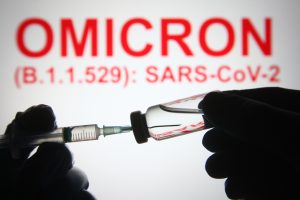Dr. Tauseef Ahmad Khan, Canada

Honey: Healing Properties of Honey
In a previous article we covered the history of honey, its physiochemical characteristics, and nutritional value. In this article we will discuss the health-related benefits of honey for humans that have been discovered through scientific research.
Antimicrobial Effects
Honey inhibits the growth of many disease-causing bacteria, viruses, and fungi. This antimicrobial activity of honey is due to specific properties found in honey.[1] These include low water concentration that inhibits bacterial growth, a glucose oxidase enzyme which produces microbe killing hydrogen peroxide, an acidic pH, and other compounds found only in specific honeys that inhibit microorganisms. One such compound, methyl glyoxal (MGO), was found to be unique to Manuka honey and it confers a much wider anti-microbial activity compared to other popular honey types.[2] A couple of studies have shown that other honey types e.g. Scottish heather honey, may also reach similar broad antimicrobial activity even without having MGO.[3] This raises the possibility that other types of honey may also have specific compounds unique to them though research work on these types lags behind when compared to Manuka honey.
A most amazing property of honey is that no bacteria has developed a resistance to it. Bacteria that have developed resistance to all known antibiotics are still susceptible to honey.[4] This can be explained by the fact that an antibiotic usually has one antibacterial target, while honey has multiple modes of anti-bacterial activity.[5] The major limitation with honey is that its clinical use is limited to topical use, e.g. skin infections or non-healing infected wounds.[6] Until now, honey has not been shown to be an effective anti-bacterial agent when orally ingested.
Wound Healing
Historically, honey was always known to be effective in improving healing and clearing infected wounds. Honey as a wound and burn treatment was first mentioned in Egyptian surgical texts written between 2600–1300 BCE.[7] Other early medical traditions including Ayurvedic, Chinese, and Roman traditions also used honey in wound care. Honey was extensively used during wars for healing wounded soldiers and its use as a poultice in World War I and II is well recorded. However, the use of honey declined after World War II as penicillin and other antibiotics were discovered and found to be more effective.[8]
In 1989, in an editorial in the Journal of the Royal Society of Medicine, Dr Zumla and Dr Lulat discussed the potential of honey:
‘The therapeutic potential of uncontaminated, pure honey is grossly underutilized. It is widely available in most communities and although the mechanism of action of several of its properties remains obscure and needs further investigation, the time has now come for conventional medicine to lift the blinds off this ‘traditional remedy’ and give it its due recognition.’[9]
Since the publication of the above paper, extensive investigations into the scientific aspect of the wound healing properties of honey have been performed and many studies, systematic reviews, and meta-analyses have shown that honey is at least equal to, or in some specific scenarios, even superior to conventional medicine in healing wounds.[10,11] In one review, honey was shown to be more effective in treating diabetic foot ulcers than traditional dressings.[12]
How honey heals wounds is quite remarkable. Honey forms a protective barrier that creates a moist wound-healing environment that does not stick to wounded tissues and prevents bacterial colonization. It also rapidly removes damaged tissues from the wounds and the associated malodor. It reduces inflammation, encourages tissue regeneration, and prevents scarring. If the wound is infected, honey provides a powerful antibacterial environment that rapidly clears the infection. Randomized controlled trials have shown that honey impregnated gauzes can increase the rate of healing both in acute wounds (e.g. burns, deep cuts, and trauma wounds) and in chronic wounds (e.g. venous ulcers, infected wounds, non-healing wounds).[13]
Honey and Upper Respiratory Infections
Most prescribed and over-the-counter preparations for cough in children are moderately effective but also carry risk of adverse side-effects. A single dose of honey before bedtime was shown in recent studies to diminish cough and discomfort experienced by children and their parents.[14] Another recent study also supported administering a few daily doses for relieving childhood cough.[15] Though a systematic review and meta-analysis of clinical trials of honey for acute cough in children showed that the effect of honey was promising, but overall inconclusive.[16] It should be noted that health authorities do not recommend giving honey to those less than 1 year old due to the risk of infant botulism.[17]
Recently a review of 14 clinical trials on upper respiratory infections was published in which the authors concluded that honey was more effective than usual care alternatives for improving symptoms including cough frequency and severity.[18] There were, however, several limitations to this study. First, they could not show the superiority of honey over a placebo. Second, honey studies included those that combined honey with other active treatments e.g. two studies with a cough suppressant, one study with Ayurvedic herb extracts, two studies with coffee, and one with milk. Third, the type of honey was not studied; this last one in general is a limitation of most clinical studies on honey.

Other Benefits of Honey
Honey has shown to be beneficial for improving oral mucositis (inflammation of the oral cavity) after radiotherapy.[19] In addition, honey has shown to improve healing after tonsillectomy [20], and topically for some eye conditions.[21] Honey has also shown promise in several dermatological conditions.[22,23] This is purported to be due to its repair and antimicrobial activity.
A usual question about honey is how does compares to table sugar in diabetes, cardiovascular disease, and their risk factors? The data is very limited in this area, but honey has shown some promise in reducing LDL-cholesterol compared to regular sugar though the difference is clinically trivial.[24]
Whilst honey is regarded by the public as beneficial for hay fever, especially local unpasteurized honey, limited trials on this topic have been contradictory though more than half of the studies indicate benefit.[25] A quantitative research synthesis of the results of these studies is needed which could give a precise answer to this question. Moreover, clinical trials of large size and adequate follow-up in different geographical locations on specific local honey are also needed.
A unique use of honey is in protection against battery ingestion injury in children. Button battery ingestion in children carries a serious risk of being lodged in the esophagus and causing severe injury through a release of chemicals leading to a caustic burn. If a child ingests a button battery, the parents are now recommended to use honey as a pH neutralizer before the child can be rushed to the hospital for emergency removal of the battery.[27]
There is a swath of studies on honey’s purported beneficial effects using laboratory and animal studies where benefit has been shown for altering microbial pathogenicity, reversing antibiotic resistance, modulating immunological parameters, improving tissue repair, inhibiting cancer cell growth and protection against UV induced DNA damage, reducing inflammation and antioxidant damage, and improving diabetes related parameters etc.[27-34] However, the clinical relevance of such effects is unproven unless followed by human studies. Alas, research in humans is severely lacking in most of these areas.
The Cure for mankind
While honey has shown tremendous effectiveness in topical applications its clinical benefits when ingested leaves much to be desired. Traditional knowledge would argue that honey is very beneficial in a wide range of conditions, however, very few areas have been actively researched and modern clinical use of honey is currently very limited.
The most important point that is being ignored in the area of honey research, except in wound healing (where Manuka honey has become the standard), is the type of honey used. The type of honey is determined by its floral source and geographical location — therefore, there are potentially thousands of different honey types. Unfortunately, the majority of honey sold in the supermarket by honey packers is a blend honey from various sources. Some packers mix honey from different countries to make a light or dark coloured blend that looks attractive for sale. While this blended honey may retain some general beneficial properties, the precise effectiveness for various diseases cannot be studied as every batch is different.
The Holy Quran points to the importance of the type honey as well:
یَخۡرُجُ مِنۡۢ بُطُوۡنِہَا شَرَابٌ مُّخۡتَلِفٌ اَلۡوَانُہٗ فِیۡہِ شِفَآءٌ لِّلنَّاسِ ؕ اِنَّ فِیۡ ذٰلِکَ لَاٰیَۃً لِّقَوۡمٍ یَّتَفَکَّرُوۡنَ
‘There comes forth from their bellies a drink of varying hues. Therein is cure for men. Surely, in that is a Sign for a people who reflect.’ [Holy Quran, 16:70]
The word mukhtalifun alwanuhu means ‘different colours or characteristics.’ It is well established that the primary determinant of honey type and colour is its floral source.[35] The Holy Quran guides that the curative powers of honey are locked behind the floral origin of honey. It behoves people to delve deep into research on the different types of honey to unlock these cures as it states: it is a sign for people who reflect. Thus, real progress in honey research would only be made if we take this Quranic verse as our guiding principle in the field of honey research.
The success of Manuka honey is a prime example of the truth of this Quranic guidance. Manuka honey comes from a single floral source (Leptospermum scoparium or Manuka tea-tree) and its curative potential was unlocked as a result of decades of in-depth research by tireless New Zealand researchers led by Dr. Peter Molan. They demonstrated the effectiveness and superiority of Manuka honey for its antimicrobial effects and wound healing. Manuka honey from New Zealand is now a billion-dollar industry and this is the only honey approved for medical use for wound healing.[36] In Europe more than 100 different floral honey types are characterized and available in the market, the majority of which have not been studied in detail for their specific health potential.[37,38] Additionally, there are thousands of honey types around the world which can be studied for their specific effects. This is the way forward and future research should focus on floral honey types and not just any honey.
About the Author: Dr. Tauseef Ahmad Khan is a research associate at the University of Toronto researching honey.
————————————
ENDNOTES
1. Israili, Z. H. Antimicrobial Properties of Honey. American Journal of Therapeutics 21, 304–323 (2014).
2. Mavric, E., Wittmann, S., Barth, G. & Henle, T. Identification and quantification of methylglyoxal as the dominant antibacterial constituent of Manuka (Leptospermum scoparium) honeys from New Zealand. Molecular Nutrition & Food Research 52, 483–489 (2008).
3. Fyfe, L., Okoro, P., Paterson, E., Coyle, S. & McDougall, G. J. Compositional analysis of Scottish honeys with antimicrobial activity against antibiotic-resistant bacteria reveals novel antimicrobial components. LWT – Food Science and Technology 79, 52–59 (2017).
4. Cooper, R. & Jenkins, R. Are there feasible prospects for manuka honey as an alternative to conventional antimicrobials? Expert Review of Anti-infective Therapy 10, 623–625 (2012).
5. Cooper, R. A., Jenkins, L., Henriques, A. F. M., Duggan, R. S. & Burton, N. F. Absence of bacterial resistance to medical-grade manuka honey. Eur. J. Clin. Microbiol. Infect. Dis. 29, 1237–1241 (2010).
6. Maddocks, S. E. & Jenkins, R. E. Honey: a sweet solution to the growing problem of antimicrobial resistance? Future Microbiology 8, 1419–1429 (2013).
7. Crane, E. A book of honey. (Livraria Nobel SA, 1983).
8. Croft, L. Honey and health. (Thorsons Publishing, 1987).
9. Zumla, A. & Lulat, A. Honey-a remedy rediscovered. (1989).
10. Jull, A. B. et al. Honey as a topical treatment for wounds. Cochrane Database of Systematic Reviews (2015) doi:10.1002/14651858.CD005083.pub4.
11. Vandamme, L., Heyneman, A., Hoeksema, H., Verbelen, J. & Monstrey, S. Honey in modern wound care: A systematic review. Burns 39, 1514–1525 (2013).
12. Tian, X. et al. Effects of honey dressing for the treatment of DFUs: A systematic review. International Journal of Nursing Sciences 1, 224–231 (2014).
13. Oryan, A., Alemzadeh, E. & Moshiri, A. Biological properties and therapeutic activities of honey in wound healing: A narrative review and meta-analysis. Journal of Tissue Viability 25, 98–118 (2016).
14. Paul, I. M. et al. Effect of Honey, Dextromethorphan, and No Treatment on Nocturnal Cough and Sleep Quality for Coughing Children and Their Parents. ARCH PEDIATR ADOLESC MED 161, 7 (2007).
15. Axelsson, I. Honey, not dextromethorphan, was better than no treatment for nocturnal cough in children with upper respiratory infections. Evidence-Based Medicine 13, 106–106 (2008).
16. Oduwole, O., Meremikwu, M. M., Oyo-Ita, A. & Udoh, E. E. Honey for acute cough in children. Cochrane Database of Systematic Reviews (2014) doi:10.1002/14651858.CD007094.pub4.
17. Aureli, P., Franciosa, G. & Fenicia, L. Infant botulism and honey in Europe: a commentary. The Pediatric Infectious Disease Journal 21, 866–868 (2002).
18. Abuelgasim, H., Albury, C. & Lee, J. Effectiveness of honey for symptomatic relief in upper respiratory tract infections: a systematic review and meta-analysis. BMJ Evidence-Based Medicine (2020) doi:10.1136/bmjebm-2020-111336.
19. Tian, X. et al. Impact of honey on radiotherapy-induced oral mucositis in patients with head and neck cancer: a systematic review and meta-analysis. Annals of Palliative Medicine 9, 1431–1441 (2020).
20. Hwang, S. H., Song, J. N., Jeong, Y. M., Lee, Y. J. & Kang, J. M. The efficacy of honey for ameliorating pain after tonsillectomy: a meta-analysis. Eur Arch Otorhinolaryngol 273, 811–818 (2016).
21. Cernak, M., Majtanova, N., Cernak, A. & Majtan, J. Honey Prophylaxis Reduces the Risk of Endophthalmitis During Perioperative Period of Eye Surgery: HONEY REDUCES RISK OF ENDOPHTHALMITIS. Phytotherapy Research 26, 613–616 (2012).
22. McLoone, P., Warnock, M. & Fyfe, L. Honey: A realistic antimicrobial for disorders of the skin. Journal of Microbiology, Immunology and Infection 49, 161–167 (2016).
23. McLoone, P., Oluwadun, A., Warnock, M. & Fyfe, L. Honey: A Therapeutic Agent for Disorders of the Skin. Cent Asian J Glob Health 5, (2016).
24. Tul‐Noor, Z., Khan, T. A., Mejia, S. B., Souza, R. de & Sievenpiper, J. L. The Effect of Honey Intake on Lipid Risk Factors: a Systematic Review and Meta-Analysis of Controlled Trials. The FASEB Journal 31, 966.23-966.23 (2017).
25. Pellow, J., Nolte, A., Temane, A. & Solomon, E. M. Health supplements for allergic rhinitis: A mixed-methods systematic review. Complementary Therapies in Medicine 51, 102425 (2020).
26. Anfang, R. R. et al. pH-neutralizing esophageal irrigations as a novel mitigation strategy for button battery injury: Esophageal Irrigations for BB Injury. The Laryngoscope 129, 49–57 (2019).
27. Alvarez-Suarez, J. M., Tulipani, S., Romandini, S., Bertoli, E. & Battino, M. Contribution of honey in nutrition and human health: a review. Mediterranean Journal of Nutrition and Metabolism 3, 15–23 (2010).
28. Khan, R. U., Naz, S. & Abudabos, A. M. Towards a better understanding of the therapeutic applications and corresponding mechanisms of action of honey. Environmental Science and Pollution Research 24, 27755–27766 (2017).
29. Bobiş, O., Dezmirean, D. S. & Moise, A. R. Honey and Diabetes: The Importance of Natural Simple Sugars in Diet for Preventing and Treating Different Type of Diabetes. Oxidative Medicine and Cellular Longevity 2018, 1–12 (2018).
30. Samarghandian, S., Farkhondeh, T. & Samini, F. Honey and Health: A Review of Recent Clinical Research. 18.
31. Meo, S. A., Al-Asiri, S. A., Mahesar, A. L. & Ansari, M. J. Role of honey in modern medicine. Saudi Journal of Biological Sciences 24, 975–978 (2017).
32. Ahmed, S. & Othman, N. H. Honey as a Potential Natural Anticancer Agent: A Review of Its Mechanisms. Evidence-Based Complementary and Alternative Medicine 2013, 1–7 (2013).
33. Alvarez-Suarez, J., Giampieri, F. & Battino, M. Honey as a Source of Dietary Antioxidants: Structures, Bioavailability and Evidence of Protective Effects Against Human Chronic Diseases. Current Medicinal Chemistry 20, 621–638 (2013).
34. Ajibola, A., Chamunorwa, J. P. & Erlwanger, K. H. Nutraceutical values of natural honey and its contribution to human health and wealth. Nutrition & Metabolism 9, 61 (2012).
35. De-Melo, A. A. M., Almeida-Muradian, L. B. de, Sancho, M. T. & Pascual-Maté, A. Composition and properties of Apis mellifera honey: A review. Journal of Apicultural Research 57, 5–37 (2018).
36. Eaton, C. V. Manuka: The biography of an extraordinary honey.
37. Persano Oddo, L. et al. Botanical species giving unifloral honey in Europe. Apidologie 35, S82–S93 (2004).
38. Persano Oddo, L. & Piro, R. Main European unifloral honeys: descriptive sheets. Apidologie 35, S38–S81 (2004).




Add Comment